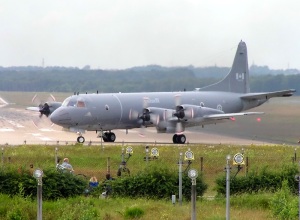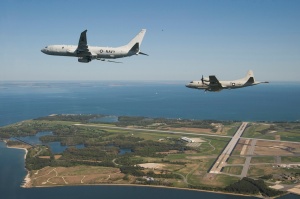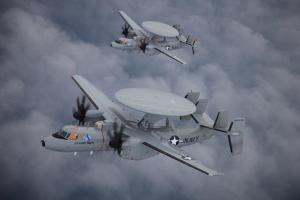AFAC, the Air Force Association of Canada, an air power advocacy group which includes many retired RCAF personnel, has published a position paper highlighting the need to replace Canada’s manned C4ISR (Command, Control, Communications, Computers, Intelligence, Surveillance and Reconnaissance) aircraft. If you’re from somewhere other than Canada, or like me have studied defence from a global rather than Canadian perspective, you may scan the list of active RCAF aircraft and conclude with some confusion that Canada has no such aircraft. Of course, what they are really talking about are Canada’s maritime patrol aircraft, the CP-140 Auroras (that’s a P-3 Orion that started with S-3 Viking ASW equipment, for those not current with Canadian nomenclature), which anywhere else would be considered an anti-submarine, not command and control, asset, hence the confusion. Canadian defence discourse has always lived in a world of its own.
Nevertheless, AFAC makes some good points. With upgrades, the Aurora is a flexible multi-mission platform, and its capabilities allow it to take on command and control missions for which it was never designed. Not all of the fleet has been upgraded, and without upgrades, the fleet will wear out long before a replacement comes along. Crucially, this mission set has been ignored by the Harper government’s big-spending defence procurement plans, following a trend set by many previous governments. The mission set of the CP-140s is an extremely useful one, ranging from Search and Rescue (another area in which Canada could stand to have more assets given its vast territory) to Arctic sovereignty patrols to fishery protection to law enforcement assistance functions to command and control to… well, their original purpose. They are also a useful deployable asset for expeditionary functions, as AFAC points out.
But why not go one step further? The obvious Aurora successor is the P-8 Poseidon. While the P-8 would be a significant capability boost, Canada may not be able to replace the Aurora on a one-for-one basis. The US and Australia, facing the same problem, are looking at drone-based solutions, whereby a P-8 might control a number of drones. The continuing issue will be patrol coverage. Canada has never had the ability to adequately patrol its vast coastal and northern territories. So why not replace, say, four of those perspective P-8s with a purpose-built C4ISR platform which has the equipment to scan a much larger area? The US Navy will soon purchase its next-generation fleet of E-2 Hawkeyes, with a similar unit cost to the P-8 (based on available figures). These platforms would also be a force-multiplier for Canada’s fighter force, and given the cost inflation of the F-35, will likely cost not much more per unit. If Canada does drop the F-35 in favour of a cheaper platform, the savings would more than cover the purchase by themselves.
In the past, it could have been argued that the Hawkeye is designed to scan the air and not the ground, but this is no longer a valid argument. It is frequently used in search and rescue operations, and the E-2D will mount a new AESA radar capable of detailed ground mapping. Any mission the Aurora or P-8 could take on, short of anti-submarine warfare, the E-2 can do better over a wider area.



